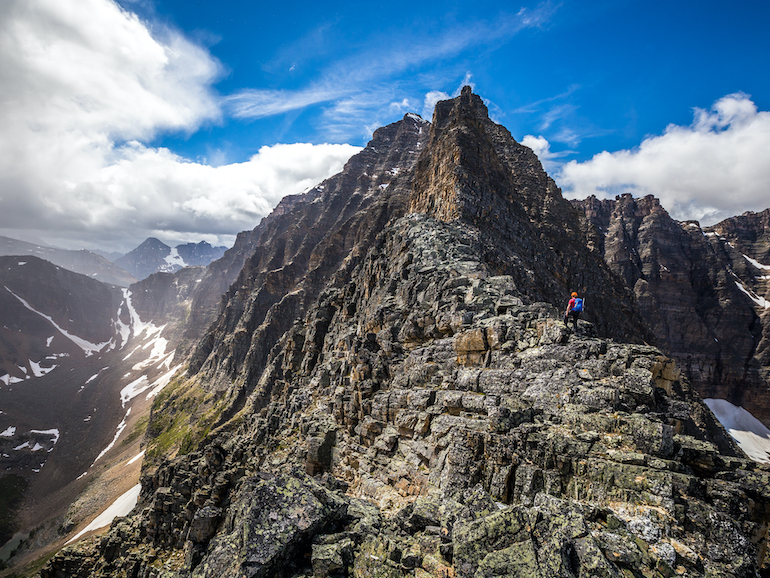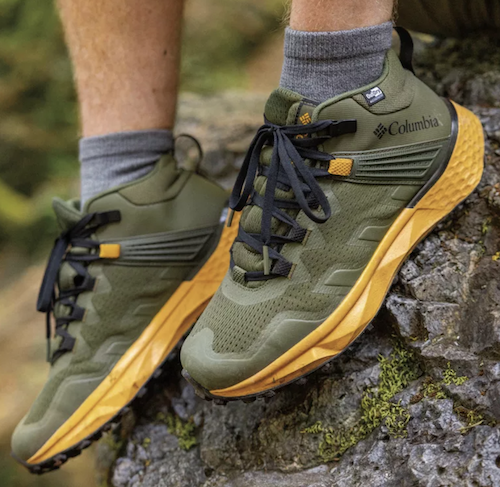Everything you need to know to start hiking this spring

Step onto the trail, and you'll find yourself captivated by the rhythm of your footsteps, the chorus of birdsong, and the gentle caress of a cool breeze. Hiking is a symphony for the senses, where the sights, sounds, and scents of the natural world harmoniously blend to create an experience unlike any other.
Beyond the physical benefits of hiking, such as improved fitness and cardiovascular health, lies a realm of profound personal rewards. It is a journey that unveils hidden strengths, fosters resilience, and invites you to connect with nature in ways you never thought possible. As you traverse winding paths, ascend towering peaks, and explore lush valleys, you'll discover a deep sense of peace and tranquility that only the great outdoors can offer.
Hiking challenges you to push beyond your comfort zone, both physically and mentally. It teaches you the art of perseverance, showing you that every uphill climb is a metaphor for overcoming obstacles in life. It instills confidence as you conquer new trails and witness the vastness of the world laid out before you. With each step, you'll gain a renewed appreciation for the beauty and resilience of nature, while also realizing your own capacity for growth and adventure.

Whether you seek the serenity of a secluded forest, the grandeur of towering mountain peaks, or the serenade of a cascading waterfall, hiking presents a vast playground of possibilities. From gentle strolls along meandering rivers to exhilarating treks across rugged terrains, there's a trail for every taste and ability. So, whether you choose to wander alone in peaceful solitude or join kindred spirits along the way, the trail welcomes you with open arms.
If you've got your eyes on a long hike, it's essential to be prepared so that you can take advantage of your time outdoors. Having the right food, information, medical equipment, equipment, and physical fitness can mean the difference between an amazing experience or a nightmare. So preparation is key!
Here are our tips and tricks for a multi-day hike that you should always keep in mind before a trip.
Start with Research
Before embarking on your hiking journey, it's important to conduct thorough research to ensure a safe and enjoyable experience.
Choose Your Destination
Research hiking trails and destinations in your area or places you plan to visit. Look for trails suitable for beginners in terms of length, difficulty level, and elevation gain. Consider factors such as scenery, accessibility, and trail conditions.
According to Sarah Johnson, an experienced hiker and author of Hiking 101: A Comprehensive Guide for Beginners, it's essential to choose a trail that matches your fitness level and hiking experience. She advises, "Starting with shorter trails and gradually progressing to more challenging ones will help build your confidence and endurance."
Gather Information
Read trail guides, online forums, and websites to gather information about your chosen destination. Look for details such as trail length, difficulty rating, terrain, and any special considerations or permits required.
Get the Right Gear
Having the appropriate gear is crucial for a comfortable and safe hiking experience.
Footwear
Invest in a good pair of hiking shoes or boots that provide ankle support and have a sturdy grip. Catherine Adams, an outdoor gear specialist, advises, "Choose footwear that fits well and is designed for hiking. Look for waterproof or water-resistant options, especially if you plan to hike in wet or muddy conditions."
For instance, consider a hiking shoe such as the Facet 75 Mid OutDry Shoe from Columbia Sportswear.

The Facet™ 75 Mid OutDry™ Shoe is a versatile and lightweight hiking shoe designed for adventurous individuals seeking optimal performance and comfort. Its running-inspired fit and athletic midsole delivers underfoot comfort and all-terrain traction. With an Outdry™ waterproof-breathable mesh upper, this shoe can handle various weather conditions, while the innovative NAVIC FIT SYSTEM™ ensures a natural midfoot lockdown. Additional features include TPU Midfoot support for stability, Techlite™ PLUSH midsole for cushioning, and a TPU Heel Clip for extra stability. The Adapt Trax™ outsole provides exceptional traction in wet and dry conditions, making it suitable for rugged terrains.
Whether you're hiking trails or exploring the city, the Facet™ 75 Mid OutDry™ Shoe is a reliable choice that offers protection, comfort, and versatility for all your adventures.
Wear moisture-wicking and breathable clothing suitable for all weather conditions. Layering is key to adjusting to temperature changes. Michelle Thompson, a seasoned hiker and founder of an outdoor clothing brand, recommends, "Choose synthetic or merino wool fabrics that dry quickly and keep you warm even when wet. Don't forget to wear a hat and pack a lightweight rain jacket."
Backpack and Essentials
Carry a well-fitting backpack with essential items. Include water, snacks, extra layers, a first aid kit, a map or compass, a whistle, sunscreen, insect repellent, and a headlamp or flashlight. Emma Harris, an outdoor adventure guide, emphasizes the importance of packing essentials. She says, "Always carry more water than you think you'll need, as hydration is crucial. Your backpack should also have room for extra layers and emergency supplies."

Hiking the Grouse Grind in British Columbia
Start Slow and Easy
When you're new to hiking, it's important to start with manageable trails and gradually increase difficulty.
Trail Selection
Choose trails with shorter distances and low elevation gains. Look for well-marked and maintained paths suitable for beginners. Sarah Johnson suggests, "Look for trails rated as 'easy' or 'moderate' and gradually progress to more challenging terrain as your skills improve."
Physical Preparation
Prepare your body for hiking by gradually increasing your fitness level. Engage in regular cardiovascular exercises, such as walking or cycling, and incorporate strength training exercises for your legs and core.
Beginning hiking can be a rewarding and invigorating experience, but it's important to start with proper research, gear, and preparation. Remember to choose suitable trails, wear appropriate clothing and footwear, and gradually increase the difficulty level. With these guidelines, you'll be well on your way to enjoying the beauty of the great outdoors.

 Tweet
Tweet Share
Share